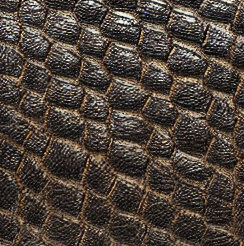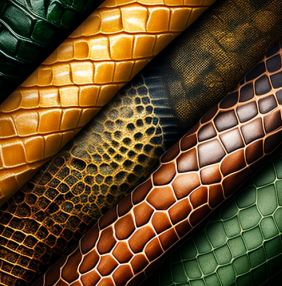How do you protect Alligator leather?
Introduction:
Have you ever seen a fancy purse or pair of shoes made from crocodile skin? It has really neat bumpy scales and pretty colors that make it super unique. Crocodile skin products can cost a ton of money because they are made from a special type of leather. In this article, you’ll learn all about crocodile skin and how to take good care of it so your cool crocodile stuff lasts a long time!

Where Alligator Skin Comes From
Crocodile skin leather comes from – you guessed it – crocodiles! After crocodiles are done using their skin, it is carefully removed and treated so it can be turned into leather. This process is called tanning. Tanning crocodile skin takes a long time because the scales are really tough! Once it’s tanned, the leather is checked for any flaws. Then, fashion designers use it to make expensive purses, wallets, shoes, belts, and more. They love working with crocodile leather because the bumpy scales make such awesome patterns. No two pieces of crocodile skin are exactly the same!
Cleaning Alligator Skin
To keep your crocodile leather stuff looking brand new, you’ve got to clean it regularly. Start by gently brushing it with a soft brush to get rid of any dirt or dust. Next, use a soft cotton cloth to wipe down the entire surface. Don’t scrub too hard or you could scratch the scales! For a deeper clean, use a special leather cleaner and test it on a small hidden spot first. Some cleaners are too harsh and could wreck your expensive crocodile skin item.

Storing Alligator Skin Right
It’s equally important to store crocodile leather items properly when you’re not using them. Keep them in a cool, dry place away from direct sunlight so the colors don’t fade. Before putting a crocodile skin purse away, stuff it lightly with acid-free tissue paper so it keeps its shape. Never let a crocodile skin belt curl up; keep it hung or laid flat. Improper storage that leads to bending or folding can cause the scales to crack over time.
Special Treatments
There are also some special treatments that can help maintain that awesome crocodile skin look. Leather conditioners are products you rub into the skin that keep it soft and flexible. Make sure to pick a conditioner specifically for exotic leathers – not the kind for regular cow leather. Apply it every few months. You can also find leather protectants that shield crocodile skin from UV rays to prevent fading and drying out.
Fixing Common Issues
Uh oh, is your crocodile skin item looking worn and dingy? No worries – leather experts can help restore the color and make scuffed up scales look better again. Take really damaged stuff to a professional leather repair shop. They have the right tools and solutions to fix cracked and scratched spots on crocodile skin without wrecking the beautiful bumpy texture. For stains or faded spots, they can re-dye the leather so it looks rich and colorful again.

Eco-Friendly Alligator Skin
Lately, many people have become concerned about how crocodiles are treated when their skin is turned into leather. Luckily, there are now laws to protect crocodiles and make sure they are sourced responsibly. Many top fashion brands use only eco-friendly crocodile leather from reptile farms that follow strict regulations about treating animals humanely and conserving crocodile populations. When you buy crocodile skin products made using earth-friendly practices, you can feel good knowing your purchase isn’t harming crocodile species.
The Bottom Line
Caring for expensive crocodile skin items takes some extra effort – but it’s totally worth it! Follow this advice to keep your crocodile leather purses, shoes, belts, and more looking fabulous for many years. With proper storage, cleaning, and conditioning, you can enjoy unique crocodile skin goods that’ll stay in tip-top shape and never go out of style!
Next Up
Is alligator leather illegal?
Does alligator leather last?
